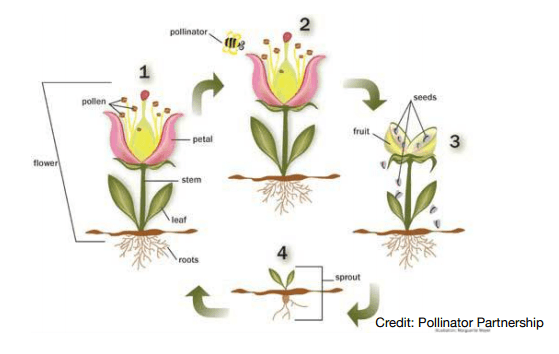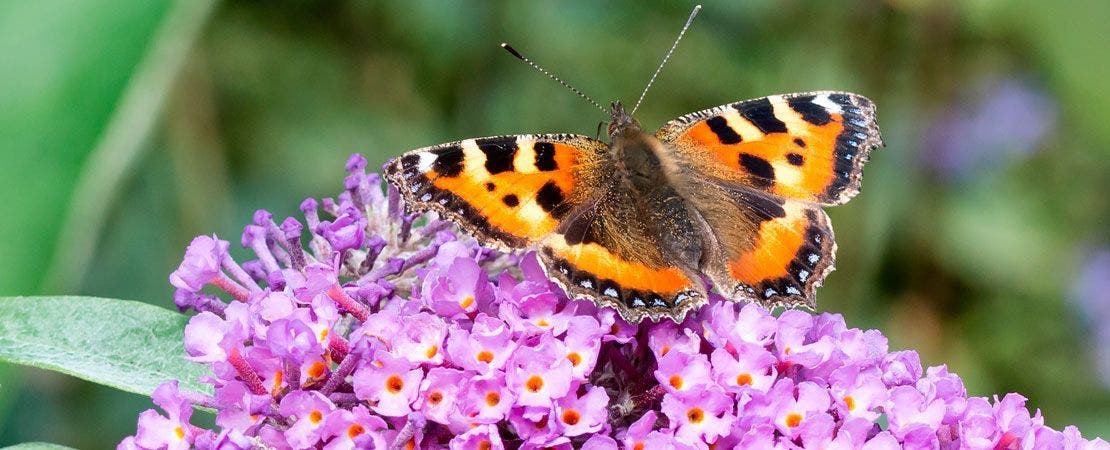A pollinator is any insect, bird, or mammal that moves pollen from the male anther of a flower to the female stigma of a flower of the same species.
The weather has been going a little crazy the last few years, and each year it seems that more and more of the country is affected by drought conditions. It’s no surprise, then, that drought landscaping (sometimes called xeriscaping) is becoming a hot topic. There are a lot of easy things you can do in your garden to conserve water. A rain barrel under your house gutters is an obvious solution, and one that’s becoming more and more popular (I’ll be installing a 55-gallon barrel at my parents’ house tomorrow). Putting down a thick layer of mulch can help a lot of plants to retain moisture. Many landscapers are recommending less grass, most types of which require a tremendous amount of water. In the place of grass natural areas and planting beds are taking over.
This has been done unknowingly of the harm to these beneficial insects that are essentially providing us with plant based nutrition that fuels our bodies, fibers to clothe us, spices and medicines, oxygen, and a stunning array of flowers.


Pollinators and the Pollinator Cycle
A pollinator is any insect, bird, or mammal that moves pollen from the male anther of a flower to the female stigma of a flower of the same species. This simple action allows the plant to make seed and reproduce. 90% of plant species require a pollinator to reproduce.
Actually, we can be a pollinator by using a small brush and taking pollen from one plant and dabbing it on the other. We aren’t very fast or efficient but we can be called a pollinator. Perhaps we could classify the most efficient pollinators in 7 major groups:
- Beetles – the oldest of the pollinators. They are most well known for their pollination of agnolias. They are a bit cumbersome and some of the pollen that collects on their feet and body is lost as it moves from flower to flower in its quest for nectar.
- Bees – Bees are often what we think of when we think pollination but surprisingly social bees such as honey bees and bumble bees are a small percentage of our pollinators. Solitary bees such as leaf cutter, green metallic and others are among the 20,000 species of bees that pollinate.
- Flies – Flies are pollinators of chocolate. There are also flies called Hover flies that have a larva stage that is a great predator for pest management. I see these larvae eating my plump orange aphids on my milkweed.
- Moths – Most moths are nocturnal and many are good pollinators. As a bonus they lay eggs on plants that provide caterpillars for most momma birds to feed their young, so they provide double benefits in the garden.
- Butterflies – Most butterfly species pollinate, and some are the primary pollinator for certain flowers. They are eye candy in the garden always encouraging us to pause and enjoy their beauty.
- Hummingbirds – are only in the Western Hemisphere and assist in pollination for those tubular flowers that some pollinators have a hard time getting in.
- Bats – pollinator over 500 plant species including mango, banana, cocoa and agave (used to make tequila).
So many ways we can help:
- How to make a difference in the pollinator population. http://millionpollinatorgardens.org/
- Protect their lives…Preserve ours. http://www.pollinator.org
- Connecting communities and pollinators. https://beecityusa.org/
- Are you a City or Campus that wants to create sustainable habitat for Pollinators? https://xerces.org
- More Educational Material: https://ccuh.ucdavis.edu/pollinator-resources
Author: Ann Barklow
Ann is a Certified Horticulturist, Master Gardener and Arborist with 35 years in the Horticultural and Landscaping Field. In her community, she serves on the Piedmont Tech Horticultural Advisory committee along with Bee City USA, America in Bloom, Lakeland's Master Gardener Board of Directors, and the Festival of Flowers Committee. She has been a Strategic Partner with Park Seed Company, Wayside Gardens, and Jackson & Perkins - educating on pollinators and wildlife.





